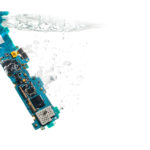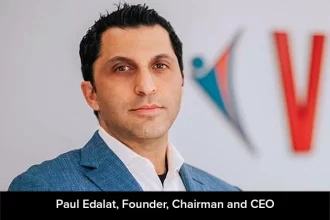IOT is one of the most used phrases in telecommunications and industry. There is much talk about 50 billion connected devices by 2025 and the ability to talk to your refrigerator in Phoenix when you are in Brussels, self-driving cars, drones that deliver your dinner, sensors on your dog to make sure he doesn’t roam out of your yard and watching a football game from the point of view of the football. Making sense of this as a business executive in order to execute a business plan needs some common sense analysis. Therefore, businesses that are considering using IOT technology should consider some of the following concepts that I have seen developing:
IOT is first and foremost a solution to a problem: Let’s take the example of Oil and Gas. Truck rolls have long been the most costly part of oilfield production. A guy in a white truck used to have to drive hours in the Permian Basin to a remote area to measure the production of a well or to inspect a pumpjack that was broken. The energy industry has long recognized IOT as a solution to the distance problem. Cisco’s’ white paper “the Digital Oilfield” first noted that oilfields could be made 20-40% more efficient by digitalization i.e. adopting IOT to the oilfield in its processes. The transport of data for use by experts far away revolutionized the way that oil companies did business. Similarly, many industries use remote monitoring and metering to a cloud to solve the distance problem. So, the first question to ask about any IOT solution is, what problem are we solving?
IOT Platforms and Solutions have flooded the market, consider developing your own: Do a Google search on IOT solutions or IOT platforms and you will see millions of related topics. The great irony in picking a solution is not necessarily which one has the best solution but which one best fit and addresses the problem you are trying to solve. It may be that developing your own is the best solution because it becomes your companies Intellectual Property and maybe later an adjunct business that you sell to your competitors. Businesses that provide Software as a Service (SAAS) get huge valuations. I know a global machinery rental CEO that decided after looking at all the possible solution platforms in the market decided to build his own. Early on when we started Globalgig, our CEO and I survey all possible solutions for our own BSS/OSS and decided that building our own would create the most value in the company. So strongly consider it or jointly develop your platform and own the intellectual property.
If you decide not to build your own platform, get the complete solution. I see many companies that think they can save money by being a “general contractor” for their IOT Solution. They get the platform from x automation company, they get the devices from Y monitoring company, they get the connectivity from Z carrier. Coordination of this effort spins a lot of cycles. There is a benefit to working with a good integrator that has the relationships to put it all together in a package.
OEMs are going “born connected” with “spark Sims”: In the past Original Equipment Manufacturers (OEM’s) left the connectivity question up to their customers. This would lead to the unenviable situation where an end customer had to go source network connectivity in every location/country. If the application wireless connections, the company would have to source local SIM cards where the equipment is operating. One of the big trends that we see if that equipment manufacturers are including an active sim in the devices so that the customer can activate their equipment out of the box. This is a much better user experience. We have a customer who makes water pumps for industry that are monitored with cell service all over the world. They include a year of cellular service in the price of the pump. This is made even easier with the inclusion of a global sim that is included in one bill.
Make your solution global and watch your business grow: Several micro trends lead to a more ubiquitous availability of its solutions on a cost effective basis. First, satellite providers are starting to include cellular connectivity in their remote solutions. Why? Cellular networks are growing, and companies often can take advantage of lower cost cellular connectivity. In mixed situations, satellite providers have become more responsive and started to include cell service. Similarly, global connectivity from companies like Globalgig make your IOT solution viable everywhere. So, when designing an IOT solution, design it for future growth by making it viable as a global solution. This avoids costly retrofitting later and makes your companies market expansion easier.
The Internet of Things can seem daunting for a service provider, an equipment provider and a user. Using a common sense approach eliminates a lot of missteps. Be sure to exercise your ability to provide and test a proof of concept in your lab. Get to know your partners well before making a commitment and all parties should be aware of the goals of the program. Make sure pricing price structure fits with your business goals and be realistic about how quickly businesses and solutions ramp.
Author
Greg Casey – EVP IOT and Strategic Accounts, Globalgig
Greg heads up the IoT strategy development and accounts at Globalgig (www.globalgig.com), a provider of wireless, mobility, managed network and SD-WAN solutions for the global enterprise. With over 35 years of experience in telecommunications, Greg previously founded Texas Energy Network, which was the first provider of LTE service to the energy industry; it had a 50,000-square-mile network across Texas oilfields and provided service to Shell, Occidental Petroleum, and Anadarko among others. Previously, Greg was EVP at Qwest Communications, before it became CenturyLink, providing service to the likes of AT&T, Verizon, C&W and MCI Worldcom.










